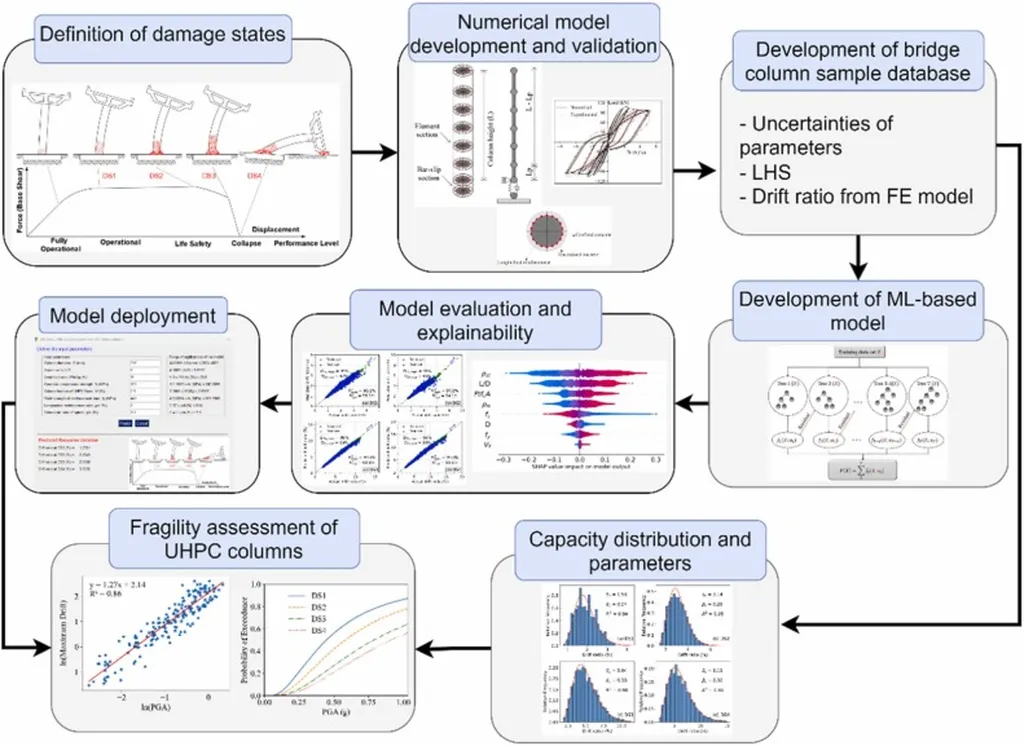In the ever-evolving quest to fortify structures against seismic events, a groundbreaking study has emerged from the Institute of Construction Technology (ICT) at Le Quy Don Technical University in Hanoi, Vietnam. Led by Viet Chinh Mai, this research delves into the potential of Ultra High Performance Concrete (UHPC) to revolutionize the seismic resilience of exterior beam-column joints, a critical component in the integrity of buildings during earthquakes.
The study, published in the *Journal of Applied Science and Engineering* (Khoa Học và Kỹ Thuật Ứng Dụng), focuses on the structural behavior of these joints when retrofitted with UHPC and subjected to reversed cyclic loading. This type of loading simulates the back-and-forth forces that structures endure during seismic events, providing a rigorous test of their durability and resilience.
The findings are compelling. Mai and his team discovered that UHPC retrofitting significantly enhances the seismic performance of reinforced conventional concrete joints. “The UHPC-retrofitted joints exhibited a notable increase in load-carrying capacity, ductility, and energy dissipation,” Mai explains. Specifically, the maximum load of UHPC-retrofitted joints was found to be 18.8% higher than that of conventional concrete joints. This is a substantial improvement, particularly for structures in seismic zones where the ability to absorb and dissipate energy can mean the difference between structural integrity and catastrophic failure.
Moreover, the secant stiffness of UHPC-retrofitted joints was superior throughout the loading cycles, particularly at higher drift levels. This means that structures retrofitted with UHPC can maintain their rigidity and stability even under extreme conditions. Energy dissipation also showed a consistent advantage for the UHPC-retrofitted joints, with up to 22% higher energy absorption at the maximum loading compared to conventional joints. This enhanced energy dissipation capability is crucial for minimizing damage and ensuring the safety of occupants during seismic events.
The study also analyzed damage evolution, revealing that while both joint types exhibited X-shaped crack patterns, the UHPC-retrofitted joints displayed delayed and less severe crack propagation. This indicates that UHPC not only improves the overall performance of the joints but also delays the onset of structural damage, providing a longer window for evacuation and response during earthquakes.
The commercial implications of this research are profound, particularly for the energy sector. Structures housing critical energy infrastructure, such as power plants and refineries, must withstand seismic events to prevent catastrophic failures that could disrupt energy supply and endanger lives. By retrofitting these structures with UHPC, energy companies can enhance the resilience of their facilities, ensuring continuous operation and minimizing downtime in the event of an earthquake.
Furthermore, the use of UHPC in new construction projects can lead to more robust and durable structures, reducing long-term maintenance costs and enhancing safety. As Mai notes, “The potential applications of UHPC in seismic retrofitting and new construction are vast. This material offers a promising solution for enhancing the resilience of structures in seismic zones, ultimately saving lives and protecting critical infrastructure.”
The study’s findings, published in the *Journal of Applied Science and Engineering*, provide a solid foundation for future research and practical applications. As the construction industry continues to seek innovative solutions for seismic resilience, UHPC stands out as a material with immense potential. The research conducted by Mai and his team at the Institute of Construction Technology is a significant step forward in this endeavor, offering a glimpse into a future where structures are not just built to last but also built to withstand the forces of nature.

